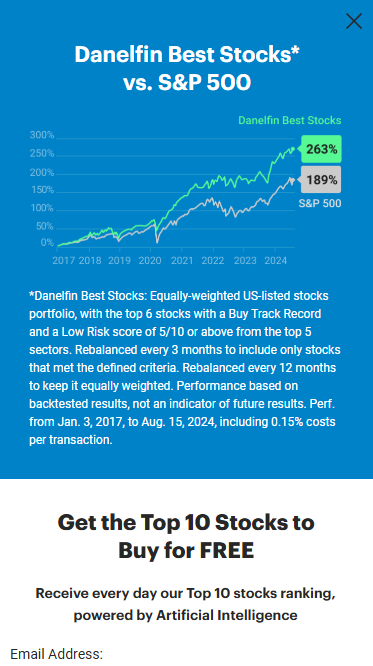20 New Tips On Choosing AI Stock Investing Platform Sites
20 New Tips On Choosing AI Stock Investing Platform Sites
Blog Article
Top 10 Things To Consider When Considering The Security And Privacy Of Ai-Based Stock Prediction And Analysis Platforms
Since they handle personal and sensitive financial data, security and privacy are crucial when utilizing AI trading platforms that forecast or analyze the prices of stocks. In the event of a data breach or misuse, it could cause reputational and financial loss. Here are 10 top tips to assess the security and privacy of these platforms.
1. Evaluation of Data Security
Secure transmission of information Check that your platform uses SSL or other secure protocols (e.g. TLS/SSL) for encryption of data transmitted between your devices and their servers.
Verify encryption at the time of rest. Verify that sensitive data is encrypted on the server platform, using secure encryption standards (e.g. AES-128).
Check for end-toend security This is an absolute must if you want to protect sensitive information or communications.
2. Assess Authentication Mechanics
Two-factor authenticaiton (copyright): Make sure that the platform you are using supports this in order to provide a layer of extra security.
Biometric authentication - Check to see if there's biometric options available for mobile app login (e.g. finger print or facial recognition, etc.).
Password policy: Verify if the platform enforces strict password policies (e.g. minimum length and requirements for complexity).
3. Verify compliance with the regulations.
Financial Regulations: Check that the platform is compliant with relevant financial regulations.
Data protection law: If your business is with a region that is subject to these laws, ensure compliance.
Audit certifications: Find out if the platform has undergone audits of security by third parties or has certifications (e.g., SOC 2, ISO 27001).
Review Data Access Controls
Role-based Access: Make sure your platform uses control based on role (RBAC) to restrict access to data only to users who are authorized.
Verify whether you can assign permissions on a granular level for various team members.
Activity monitoring. Check whether your platform keeps track of and monitors user's activities.
5. Assess Vulnerability Assessment
Regular updates: Ensure that the platform regularly updates its software to fix weaknesses.
Penetration testing: Check to determine if the platform has been subjected to regular penetration tests in order for it identify and correct security weaknesses.
Look for bug bounty programs. They are designed to motivate external security researchers (such as Google) to share security issues.
6. Evaluate Data Privacy Policies
Transparency Review the platform privacy policy to see the ways in which your personal data is collected, used, or shared.
Data minimization: Ensure that your platform only collects data necessary to its functionality.
Third-party sharing: Find out whether your platform shares data with third-party partners, and if it does, what are the conditions.
7. Secure API Utilization is Checked
API security - Ensure that the API of your platform uses secured authentication methods, like OAuth or API keys, and also encrypts any data exchanges.
Rate-limiting: Determine if the API has a rate limit to stop abuse and brute force attacks.
Review access logs. Verify that the platform monitors API usage, and logs it to monitor.
8. Assess Incident Response, Recovery
Incident response plan - Make sure that the platform is outfitted with a strategy to deal with data breaches or other security incidents.
Read the policies of the platform for notification.
Data backups: Check that the platform regularly backs up its data frequently and has a disaster recovery plan.
9. Evaluation of Physical Security Measures
Data center security: Ensure the servers of the platform are located in secure data centers that have physical security measures (e.g. monitoring, access controls).
Redundancy: Ensure that there are redundant platforms running on the platform in order to ensure that data is available in case of hardware failure.
Geographic distribution: Make sure that data is distributed over multiple geographical locations to ensure greater protection.
10. Check the privacy settings of your users
Data deletion - Ensure that you delete all personal data completely from the website when and when you cease using the platform's services.
Privacy settings: Make sure that there are privacy settings that allow you to limit the information shared and made public.
Anonymization: Determine if data is being used to anonymize to allow machine learning or analytics.
Bonus Tips
Feedback and reviews from users: Use reviews and feedback to assess the reputation of a platform in terms of security and privacy.
Trial period: Try out the privacy and security features of the platform with no cost demo.
Customer support: Ensure the platform offers robust support for security-related issues or concerns.
Check these points to determine the security and privacy level of AI trading platforms that predict stocks. So, your data and financial details are protected. A safe platform not only secures your assets, but also creates trust in their services. Take a look at the top learn more for ai investment app for blog info including options ai, investing ai, best ai stock trading bot free, investing ai, ai stock market, best ai stock trading bot free, trading with ai, ai trading, ai for stock predictions, ai stock trading app and more.
Top 10 Tips To Evaluate The Effectiveness Of Ai Platform For Analyzing And Predicting Trading Stocks
To ensure that AI-driven stock trading and prediction platforms can be scaled, they must be able to handle the increasing volume of data and complexity in markets, as well as customer demands. Here are 10 suggestions for evaluating the scaling.
1. Evaluate Data Handling Capacity
Tips: Ensure that the platform you're considering can process and process large amounts of data.
Why: A platform that is scalable must be able to handle the growing amount of data without compromising performance.
2. Real-time testing of processing capabilities
Check out how well your platform is able to handle real-time streams of data including live stock quotes or breaking news.
The reason: Inconsistent trading decisions can lead to missed opportunities.
3. Check Cloud Infrastructure and Elasticity
TIP: Check whether the platform utilizes cloud-based infrastructure (e.g., AWS, Google Cloud, Azure) and is able to scale resources dynamically.
Cloud-based platforms offer flexibility. They permit the system to scale down according to demand.
4. Algorithm Efficiency
Tip: Evaluate the computational efficacy of AI models (e.g., deep learning and reinforcement learning, etc.)) that are used to make predictions.
Why: Complex algorithmic structures are resource-intensive. Optimizing them is the most effective way to scale.
5. Learn more about Parallel Processing and Distributed Computer Systems.
Find out if the platform uses parallel computing or distributed computing frameworks.
What's the reason? These technologies provide faster data analysis and processing across multiple nodes.
6. Examine API Integration and Interoperability
Tips: Make sure to check the platform's integration with external APIs.
What's the reason? Seamless integration with platforms makes sure it is able to adapt to new data sources or trading environments.
7. Analyze User Load Handling
Try simulating traffic volumes that are high to determine the performance of your platform.
Why: Performance of a platform that is scalable should not be affected by the increase in users.
8. Assessment of Model Retraining and adaptability
Tips - Check how often the AI model is retrained and with what degree of efficiency.
Why is this? Markets are always changing, and models have to be able to change quickly to stay accurate.
9. Check Fault Tolerance (Fault Tolerance) and Redundancy
Tips: Make sure that the platform includes failover mechanisms, and has redundant systems in the event of software or hardware malfunctions.
Why is that downtime in trading is costly, which is why the ability to tolerate faults is essential to allow for scalability.
10. Monitor Cost Efficiency
Analyze your platform's cost, including the cloud's storage, cloud resources and computing power.
What is the reason? Scalability shouldn't be at the expense of unsustainable costs. It is thus crucial to strike a balance between performance and cost.
Bonus Tip: Future-Proofing
Check that the platform supports advanced technologies (e.g. quantum computing or advanced NLP), and can adapt to changes in the regulatory environment.
If you concentrate your attention on these elements, you can accurately assess the scale of AI prediction as well as trading platforms. This guarantees that they are robust, efficient, as well as ready for further expansion. View the most popular stocks ai hints for blog advice including invest ai, ai trading tool, ai stock analysis, ai stock predictions, best stock prediction website, chart ai trading, best ai penny stocks, ai stock investing, stock predictor, can ai predict stock market and more.